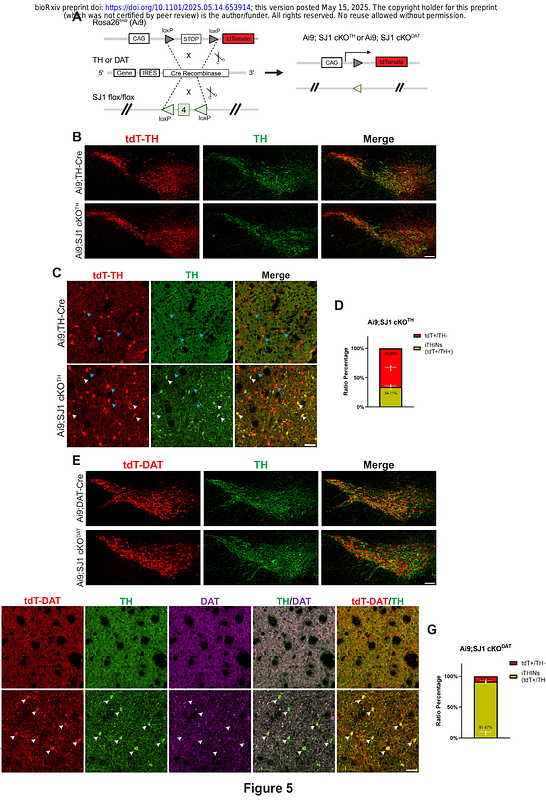Parkinson's-Linked Synaptojanin 1 Loss in Dopamine Neurons Triggers Synaptic Degeneration and Striatal TH Interneuron Compensation

Parkinson's-Linked Synaptojanin 1 Loss in Dopamine Neurons Triggers Synaptic Degeneration and Striatal TH Interneuron Compensation
Mukherjee, B.; Lin, Y.; Liu, M.; Li, Z.; Cao, X.; Cao, M.
AbstractSynaptic dysfunction is increasingly recognized as an early hallmark of Parkinson\'s disease (PD). Synaptojanin 1 (SJ1), a synaptic phosphoinositide phosphatase essential for synaptic vesicle recycling, is genetically linked to early-onset Parkinsonism (EOP). While germline SJ1 knockout mice are perinatal lethal, SJ1-R258Q knock-in mice recapitulate EOP-like symptoms and exhibit selective dystrophy of nigrostriatal dopamine (DA) terminals. However, these whole-body mutants limit understanding of SJ1\'s role in the DA system. Here, we generated DA neuron-specific SJ1 conditional KO (SJ1-DA cKO) mice. Complete SJ1 loss caused severe synaptic dystrophy throughout the striatum, indicating a cell-autonomous role of SJ1 in both substantia nigra and ventral tegmental area DA subtypes. Surprisingly, despite profound synaptic degeneration and DA deficiency, SJ1-DA cKO mice showed no overt motor deficits. Instead, we observed a robust induction of striatal tyrosine hydroxylase-positive interneurons (iTHINs), which expressed multiple DA markers and formed new connections with degenerating DA terminals, suggesting a potential local compensation. In contrast, acute SJ1 deletion in adult/aged DA neurons caused similar terminal pathology but limited iTHINs induction. Together, our findings reveal a critical role for SJ1 in maintaining DA synaptic function and uncover an adaptive striatal response to DA loss, offering insights into compensatory mechanisms relevant to PD pathogenesis.